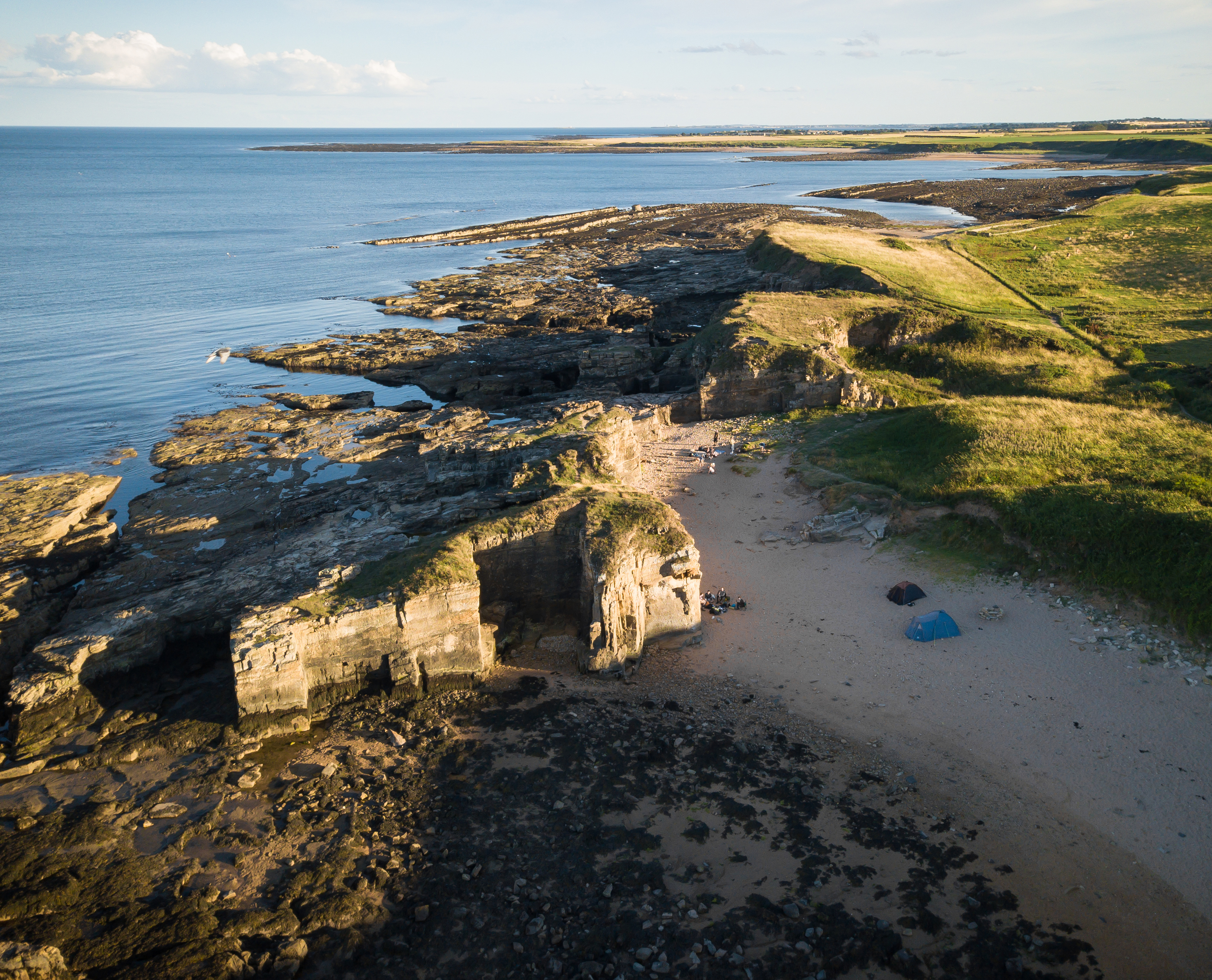About 8,200 years ago, an underwater landslide known as the Storegga slide near Norway triggered a tsunami that engulfed parts of northern Europe.
Around the same time, there was a massive dip in Britain's population.
Researchers at the University of York and the University of Leeds looked at whether the disaster contributed to the population decline, or if other factors were at play.
"The suggested population decline occurred immediately after the Storegga tsunami occurred," Patrick Sharrocks, the lead author on the paper detailing the research, told Business Insider via email. "However, a cold period coincided with the tsunami so it was unclear which event had a greater impact."
The researchers built computer simulations of how far the tsunami's waves could have reached inland.
Based on their results, the researchers concluded that the tsunami could have wiped out a significant portion of the population at Howick, Northumberland in northern England.
They recently published their findings in the peer-reviewed Journal of Quaternary Science.
65-foot waves slammed the Shetland Islands
When the landslides triggered the massive waves, they had widespread impacts. Evidence of the Storegga tsunami has been found in Norway, England, Denmark, Greenland, and Scotland, including the Shetland Islands.
Around the mainland of the UK, waves may have reached 10 to 20 feet. Off the coast of Scotland, the Shetland Islands' narrow valleys may have magnified the effects, causing waves of over 65 feet to flood the land.
There aren't written records of the disaster. Instead, the story is in the sediment deposits from lakes, lagoons, and other bodies of water that formed during the tsunami. The wave eroded sediment on land but also brought in more from the sea.
While these layers are distinctive, they often erode with time and human activity. However, they can give scientists clues about how far inland a wave traveled and how often similar events occurred.

It's possible the huge waves didn't reach Howick at all. The location has sediment that seems to be the result of a sudden event. Yet it's coarser than the finer sand found elsewhere attributed to the Storegga waves.
"Further sedimentary research at Howick could accurately identify whether deposits were produced by the tsunami at this location," Sharrocks said.
A population unprepared for a tsunami
Tsunamis are rare in the British Isles. The Mesolithic population likely never experienced one before the Storegga landslide, according to the study.
The researchers speculate that the receding sea that precedes a giant wave may have drawn people to the water to collect stranded shellfish.
If that happened, the tsunami could have drowned a significant percentage of the population. The destruction of resources, like hazel trees, could have also led to famine among survivors.
Numerical models "can reconstruct the Storegga tsunami but can never be fully representative of past events," Sharrocks said. The event was so long ago that there was a lot of uncertainty around the relative sea level position, topography, and elevation at the time.
According to the researchers' models, only if the tsunami hit at high tide would it have affected Howick.
In another paper from 2021, researchers suggested the tsunami may have destroyed evidence of human habitation in Norway, Britain, and other regions. But they also noted that "there remain very few archaeological sites with direct evidence of tsunami deposits," which makes it difficult to assess "the extent to which this event was a disaster for the coastal communities."
Future British tsunamis
For years, scientists thought the Storegga tsunami was a unique event. Recent research, however, found tsunamis hit Shetland 5,000 and 1,500 years ago.
That frequency means another one isn't out of the question.
"It means that the hazard, the risk, is far more serious than we thought previously," Dave Tappin of the British Geological Survey told the BBC in 2018.
That's why it's important to understand disasters from the past, even prehistoric ones.
"Identifying and assessing the magnitude of similar precursor events can help predict where, when, and how large future events may be in a certain area," Sharrocks said.
This article was originally published by Business Insider.
More from Business Insider: